| VFW Connections |
|
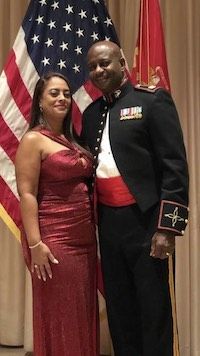 |
Carl first joined the VFW as an annual member in 1987 when he was still an active-duty Marine. He even spent some time serving as part of the Honor Guard when he was stationed at Quantico. In 1996, he became a life member after returning from Okinawa, Japan. Many years later, after his retirement from both the military and a civilian career, he was eventually persuaded to run for the position of the Post 1503 Quartermaster during Tom Levitt’s tenure as the Commander.
As the current Post 1503 Quartermaster, Carl helps to keep the post running by maintaining the bond and insurance policies, overseeing the investment fund, paying the bills, organizing membership rolls, preparing the books for monthly and quarterly audits, and participating in the annual District inspections. Carl is also involved with putting together the annual golf tournament for the post.
|
Carl was born on the island of Aruba in the country that used to be known as the Netherlands Antilles. (Today, Aruba is its own country within the Kingdom of the Netherlands.) He was the seventh child in a large family of twelve siblings. Carl was born a premature twin, weighing in at only two pounds, five ounces. However, his father’s aunt was the local midwife and ensured his survival despite his fragile state. Carl’s twin sister passed away at a young age due to a tragic smoke-inhalation accident. His great-aunt would go on to raise him, as well as many other children in the neighborhood. Although his mother made many attempts to have him come live with her, his aunt would always find reasons to keep Carl in her care.
Although they spoke English at home, his Dutch Catholic school in San Nicolas also taught him Spanish, French, and the official language of Dutch. He enjoyed school and decided to pursue technology studies after showing aptitude through the middle school specialty testing. He also enjoyed sports, playing volleyball with friends during lunchtime and meeting up for soccer and baseball matches in the evening. After finishing grade school, Carl attended a Dutch technical school; his goal was to become an electrician.
From there, Carl traveled to St. Croix in the U.S. Virgin Islands to continue with his education. Unfortunately, he ran into some problems with the school system, as their English-based institution did not establish reciprocity for his Dutch course credits. Soon, his uncle got him a job in an oil refinery. However, Carl ended up staying for only six months before heading to St. Martin with his brother. Although he enjoyed the island and working at his new job at an electric company, his mother came to visit him and convinced him to continue with his education.
His mother signed him up for a program called Job Corps. The program offered continuing education and the government paid for training and housing. Each student was paid a $25 stipend per week. Carl ended up at the Job Corps Center in Plainfield, NJ. However, he soon realized that many of the individuals who were part of this program were there as an alternative to incarceration. He started to take evening college classes at Edison Community College in New Jersey. He also completed his GED, as his Dutch high school diploma had not been translated to provide him with credit.
In six months, Carl completed his studies and went to live with his sister in Jersey City. The winters were harsh and jobs were scarce during this time, so when his brother decided to enlist in the Navy, the military sounded like a good option for Carl. A Marine Corps recruiter from down the street encouraged him to think about joining. Finally, when trouble found Carl on the New Jersey streets, he decided it was time to enlist.
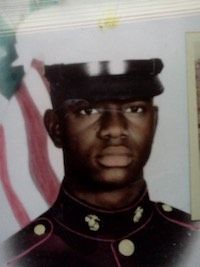
Although Carl was in his 20s when he headed to Parris Island in South Carolina for Boot Camp, his "old guy” status meant that he was viewed as a leader among the other recruits. Of the 72 men who started with him, only 36 completed the physically and mentally grueling training. From there, he headed to Fort Sill in Oklahoma for Field Artillery Fire Direction Control (FDC) training. He devoted himself to his studies and finished second in his class.
From there, he headed to Camp Lejeune. Although he was supposed to have been promoted for his success in training, they put Carl on a mess and guard duty rotation for six months, not allowing him to check in to a regular unit. Realizing that he was facing unjust racial prejudice, he appealed to the Colonel one day as he headed into the headquarters building. After the leadership was held accountable for the situation, Carl was promoted to the rank of Lance Corporal and provided with 30 days of leave.
Shortly after he returned, he received orders to Okinawa, Japan, for 12 months, which was later extended for an additional six months. There, he enjoyed working at HQ Regiment 12th Marines FDC/Survey/MET section. He learned field artillery survey planning techniques and operations. He also spent time in Korea and the Philippines participating in Joint Pacific exercises. During his time in Okinawa, his aunt who had raised him was diagnosed with cancer; he was able to return to Aruba to see her before she passed away.
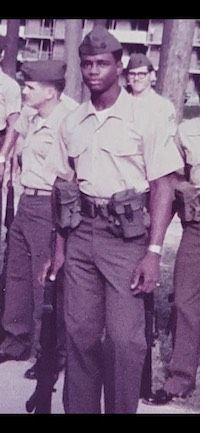
After his tour of duty in Japan, Carl received orders back to Camp Lejeune in North Carolina. He was assigned to 4th Battalion, 10th Marines HQ. There, Carl was promoted to Sergeant and assigned as the Non-Commissioned Officer in Charge (NCOIC) of the Survey/Metrological Section. As part of their responsibilities, they conducted artillery surveys to establish gun positions and provided FDC support during live fires exercises. During his time with 4th Battalion, 10th Marines, Carl participated and supported several major exercises and crisis situations. However, he felt that field artillery specialty was a dead-end job and promotions to Staff Sergeant were rare. He decided to change his Military Occupational Skills (MOS) to a different military specialty.
During that time, HQ Marine Corps announced that the 2nd Topographical Platoon was looking for Marines. Carl secured an interview with the Commander and was accepted for the job. The 2nd "Topo” platoon was the largest in the Marine Corps with 72 Marines. The platoon would deploy Geodetic Survey Teams (GST), Hydrographic Survey Teams (HST), and Topographic Teams to support different missions. As most of the tasks came from the Naval Oceanographic Office out of Stennis, Mississippi, the teams deployed on Oceanographic Survey Ships to collect data and produce products, such as Combat and Hydro Charts. Carl deployed to and/or supported production of special products in Panama, Egypt, Belize, Haiti, the Dominican Republic, Navassa Island, Grenada, Norway, and Guantanamo Bay.
During this time at 2nd Topo, Carl was sent back to Fort Belvoir for additional schooling. It was during one of these classes that he met a woman enlisted in the Army. They would go on to marry and welcomed their first daughter in October of 1983.
After being promoted to Staff Sergeant, Carl received orders to Camp Pendleton in California. He was assigned to Marine Air Support Squadron 3 (MASS 3). Carl moved around quite a bit, from Camp Lejeune to Camp Pendleton to Fort Belvoir. He served as an instructor there, teaching Geodetic and Hydrographic surveying, as well as Basic Cartography.
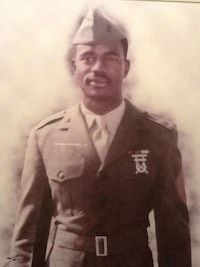
The Marine NCOIC at Fort Belvoir a Mastery Gunnery Sergeant (MGSGT) encouraged him to look into becoming a warrant officer. Just over a year later, he was accepted and promoted to Warrant Officer. Carl was scheduled to attend The Basic School (TBS) for further training. Just two days before reporting to TBS, his second daughter was born in September of 1988.
TBS is quite intense; they teach all the military specialties in 3 ½ months, as the Marine Corps will send warrant officers wherever they are needed. Therefore, a warrant officer needs to have comprehensive knowledge and flexibility to support any command. Carl returned to Camp Lejeune and was the 2nd Commander of one of the largest platoons, ready to work around the world.
It was during this time that Carl went to the UAE with a handpicked detachment. The mission was to develop a special Combat/Hydro Chart to support Amphibious Operations exercises in the UAE. Upon completion of the mission, the Marines were re-assigned to 1st Intel Company at Camp 5 in Saudi Arabia. Finally, the 2nd Topo Detachment was assigned to the MEF forward to help produce Intelligence Products of the Battlefield (IPB).
After this deployment, Carl returned to Camp Lejeune briefly and received orders for a three-year accompanied tour to Okinawa, which meant he could bring his family with him. Carl was part of the newly established III Marine Expeditionary Force (III MEF) HQ on Camp Courtney. As the MEF Mapping Charting and Geography OIC and assistant Operations Officer, he worked closely with the newly established 3rd Topographic Platoon. He was also in charge of the "war reserve stock,” a warehouse full of maps and charts of the Pacific area.
As his career advanced, Carl was selected to Limited Duty Officer (LDO) Capt. (LDO officers are Chief Warrant Officers commissioned as officers.) As a CWO3, he was promoted to LDO OE3 Captain. He was sent to Norfolk, Virginia, to attend the Navy Marine Corps Intel Training Center (NMITC) for 3 months. Upon his return to Okinawa, he extended his tour for two more years and was sent to 3rd Marine Division, 12th Marine Reg HQ as the S2 Intel Officer. Some of his many deployments included Thailand, the Philippines, Korea, and Australia.
After his tour of duty in Okinawa was completed, Carl got orders to Marine Corps Base Quantico and was assigned to the Marine Corps Intelligence Agency (MCIA). He was the Section Manager for the Senior Latin America Team, and the Geographic Information Systems (GIS) Section. Due to his multilingual knowledge and background from Aruba and other parts of the Caribbean, the job was a perfect fit. His team developed pocket-size country handbooks of many Latin America countries to include Central, South America, and the Caribbean. These contained all the information one would need to know to serve in those areas. His GIS section also conducted studies and created special charts of rivers in Latin America.
At 22 years into his Marine Corps career, HQ Marine Corps made him two offers: either work at HQ Marine Corps as the senior Geographic Intelligence Officer, or head back to Okinawa unoccupied for two years as the S2 for 31st MEU. Instead, Carl decided it was time to move on. He officially retired on 1 June 2000.
Within days of his decision to retire, Carl had an interview with a company pursuing a contract that would automate topographic systems. With Carl’s experience, he was a perfect fit for the job. The company was called Litton-TASC and they won the contract to produce Geographic Information System for the Marine Corps Topographic Units, which Carl was once a part of. As Operations and Training Manager, the team of engineers, software developers, systems integrators, and technical writers fielded hundreds of GIS systems to Marine Topo Units and conducted onsite training to all the units.
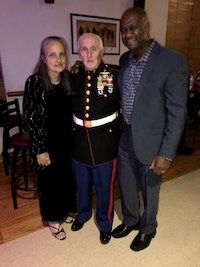
After the first three years Carl took over as project manager, and Northrop Grumman—who had bought out Litton-TASC—opened a facility in Stafford and made him the Facility Manager. The Topo Production Capability contract lasted for 13 years. When that contract ended, he worked as a software tester for the Army version of TPC, and as a Senior Manager for software development. In 2005, Carl and his first wife divorced. He remarried in 2015 to his current wife. In March of 2020, Carl decided to retire after 21 years of his second career.
Today, Carl is kept busy by his Quartermaster work at Post 1503. He has watched the VFW organization undergo many changes since he started participating as a member. He is pleased to see the post welcoming younger and more diverse members as the next generation of our organization. He hopes to someday promote an orientation class to help teach the by-laws to new members.
- As Carl learned four different languages as a child in Aruba, it wasn’t uncommon to have conversations that freely flowed among multiple languages while walking down the street.
- The diversity in Aruba also extends into the rich food culture. The island boasts fresh seafood year-round. Additionally, the local recipes don’t leave anything to waste. For example—harkening back to the days of the slave trade—the pig ears, organs, and feet were saved as important protein sources, even if they weren’t considered the prime cuts of meat. Carl grew up enjoying the food from the many nations that make up the storied history of Aruba.
- From a young age, Carl was interested in electricity due to a shocking first-hand experience. His brother was spray painting a car and had an issue with the compressor. Although Carl was told not to touch the compressor, he couldn’t resist and received a jolt before he was knocked away. From then on, he wanted to learn more.
- In St. Martin, Carl worked with a Portuguese lineman who was in charge of the high-tension wires and transformers. Although Carl wasn’t sure why the rest of the team was reluctant to work with the lineman, he observed his coworker’s lax nature toward safety standards when he was almost electrocuted after touching his screwdriver to a 220 line after waving it around during a conversation.
- While he was in New Jersey, the chief of security at Carl’s school came to the classrooms and randomly selected eight boys and three girls for a "field trip.: They brought the students to Rahway State Prison in New Jersey. The inmates were part of the now-famous "Scared Straight” program to show the students what life would be like if they were incarcerated. It was a terrifying encounter, especially as some of the prisoners were serving life sentences. After two hours with the inmates, the students returned to the bus, remaining silent all the way back to the center.
- One day, Carl fell asleep during his training at Fort Sill. In order to remind him that failure to complete the course would result in him becoming a "gun bunny,” he was made to walk around the building holding a 150-pound mortar round. He didn’t fall asleep in class again.
- During his first duty assignment in Okinawa, Carl was deployed to Camp Fuji twice a year for field artillery surveys. The mission was to support the incoming Battalion Landing Team (BLT) training exercises at Camp Fuji. During a deployment in October of 1979, the violent Typhoon Tip destroyed their steel Quonset Huts and caused an uncontrolled fire, resulting in serious injuries and fatalities. Carl survived but was shaken by the destruction and loss of his fellow Marines.
- Carl was promoted to Sergeant twice, as he was demoted for three months after a fight with someone who insulted him. His commander reminded him that he was smart and a good leader, so he needed to stay out of trouble to help himself and his Marines. He credits this as an important piece of advice in his life.
- Prior to GPS tracking, Carl and his platoon would be responsible for recording and calculating the position of the North Star 16 times per night to ensure accurate location measurements.
- Going to The Basics School for warrant officer training was an exhausting endeavor for Carl, as his daughter was born on a Friday, and he had to report to the school that Monday. Normally, it was mandatory for all participants to live in the barracks, but they allowed him to stay at home with his newborn, although he was required to report at 0430 each morning.
- During his time in the UAE, Carl was involved in the Marine Corps’ first major Hydrographic Survey Operation since Vietnam. A copy of their chart was sent to Marine Corps Commandant Alfred M. Grey. The Commandant was so pleased with the product that he had a copy signed and sent to the Platoon, thanking the detachment for a job well done.
- While conducting sonar scans overseas, Carl’s group found some mysterious red boxes in the water. When they sent a craft to retrieve them, they discovered that there were several cases of Black Label whiskey. As alcohol was strictly forbidden in the UAE, they had to fill out a Situation Report (SITREP) to note their findings.
- While stationed in Okinawa for his five-year tour, his family didn’t have access to cable TV. There was a single channel that played from 0800 to 2000. However, they didn’t really mind, as they loved living on the island of Okinawa. Carl’s family enjoyed camping, diving, and martial arts as activities. His daughters also attended the Japanese schools.
- In 2019, Carl received an award from the Prime Minister of Aruba for his military service.
